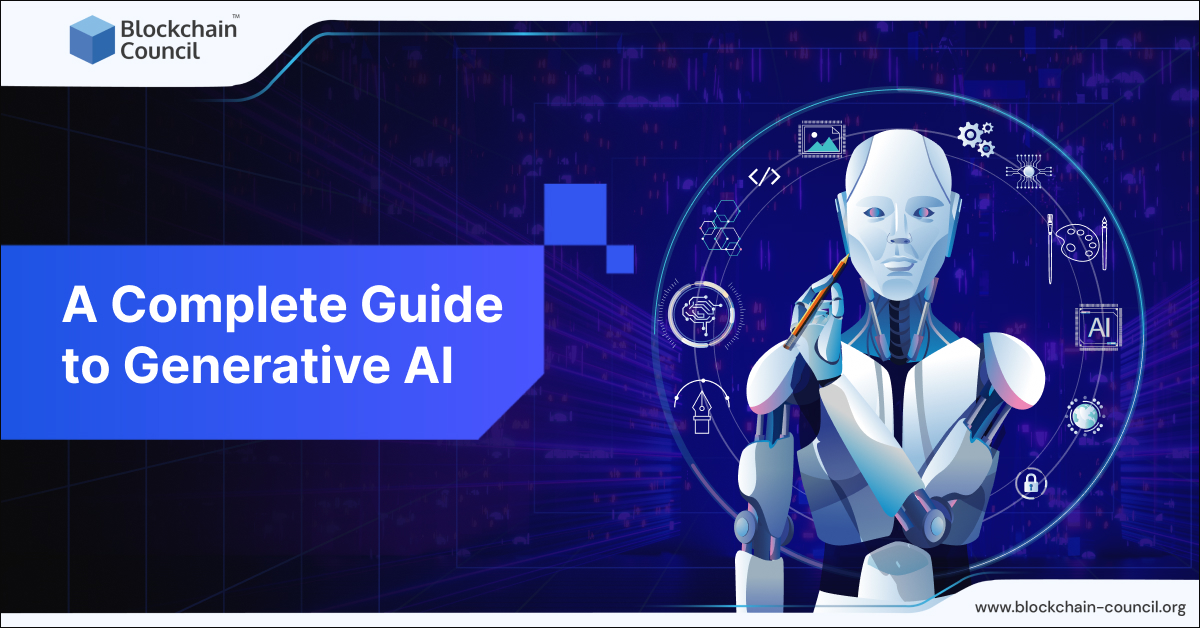
- Blockchain Council
- June 03, 2024
Introduction
In a world where innovation fuels the engine of progress, Generative AI emerges as a catalyst of unprecedented transformation. With a market value of $13.17 million as of 2023, projected to skyrocket to $22.12 billion by 2025, it’s evident that Generative AI isn’t merely a fleeting trend; it’s an indispensable force shaping tomorrows.
As we traverse this digital era, where machines learn, adapt, and even create, it’s imperative to grasp the essence of Generative AI – an intricate fusion of human-like creativity and machine precision.
This comprehensive Generative AI guide delves into the heart of Generative AI, unlocking its mechanisms, significance, and the myriad applications that shape industries. From seasoned professionals to curious newcomers, this guide to Generative AI embarks on a journey to explore Generative AI’s intricate realm.
Defining Generative AI
At its core, Generative AI is a phenomenon that empowers machines to venture beyond mere data interpretation. It encapsulates the capability of AI systems to autonomously produce content that exhibits human-like attributes. From crafting artwork and composing symphonies to drafting narratives, Generative AI simulates creativity that historically lay within the domain of human artists and innovators.
Under the surface, Generative AI operates on a foundation of neural networks, particularly the marvels of deep learning. Generative Adversarial Networks (GANs) and Variational Autoencoders (VAEs) take center stage, emulating the dynamics of creativity. GANs orchestrate a tango between a generator and discriminator, crafting output that constantly refines itself under critical evaluation. VAEs, on the other hand, map data into latent spaces, paving the way for diverse content creation.
Foundations of Generative AI
Understanding Artificial Intelligence
Artificial Intelligence (AI) is the realm of computer science that’s all about creating smart machines capable of emulating human-like thinking. AI mimics cognitive functions such as learning, reasoning, problem-solving, and decision-making. The driving force behind AI is to imbue computers with the ability to perform tasks that typically require human intelligence.
Machine Learning vs. Generative AI
Machine Learning (ML) is a subset of AI focused on enabling systems to learn from data and improve their performance over time without explicit programming. Generative AI takes this concept to a whole new level. It’s like the Picasso of AI, producing original artworks rather than just recognizing patterns. Generative AI involves training models to produce new content, such as images, text, and even music, that didn’t exist in the training data.
Types of Machine Learning Algorithms
In the world of Machine Learning, algorithms are the secret sauce. They are step-by-step procedures that enable computers to learn patterns and make predictions. There are three main types of ML algorithms:
- Supervised Learning: Here, the algorithm is trained on labeled data, where the correct answers are provided. It learns to make predictions based on these labeled examples.
- Unsupervised Learning: In this case, the algorithm works with unlabeled data and finds hidden patterns or structures within it. Clustering and dimensionality reduction are common tasks in unsupervised learning.
- Reinforcement Learning: Think of this as training a dog. The algorithm learns by trial and error, receiving rewards for good decisions and penalties for bad ones. Over time, it learns to maximize rewards.
Generative AI is a class of its own, within which the concept of Generative Adversarial Networks (GANs) takes center stage. GANs pit two neural networks against each other—one generating content, and the other evaluating it. This creative tug-of-war results in AI-generated content that often blurs the line between real and artificial.
Basics of Generative Models
What are Generative Models?
Picture this: Generative Models are like AI artists crafting new masterpieces from an existing gallery. They’re smart algorithms that learn patterns from a set of data and then generate entirely new pieces that resemble the originals. For instance, they can be trained on a dataset of cat images and magically conjure up new feline artworks.
Generative models are diverse, each with its own magical touch, like:
- Generative Adversarial Networks (GANs): These models feature a duo – a crafty generator crafting fake samples, and a discerning discriminator attempting to tell the real from the fake. The two engage in a creative tug-of-war until the generator creates utterly convincing samples.
- Variational Autoencoders (VAEs): Think of these as AI poets who first translate language into a special code, then recreate the original text using the code. VAEs map input data to a compressed ‘latent’ space, and from there, they can magically regenerate entirely new data points.
- Bayesian Networks: These are like AI storytellers who use graphs to show connections between different story elements. Imagine nodes representing characters and edges showing their relationships. This allows the AI to craft new scenarios by combining the characters in novel ways.
Probabilistic vs. Non-probabilistic Models
Autoencoders and Their Role
Autoencoders are the backbone of Generative Models. Imagine them as translators that convert a complex language into a simplified version, and then bring it back to the original language. These smart networks compress data into a compact form, and then magically reconstruct it into something meaningful.
For example, imagine feeding an image of a handwritten digit into an autoencoder. It condenses the image into a compact representation, then restores it to its original form. This forms the basis of more advanced generative models, allowing machines to dream up innovative outputs.
- Variational Autoencoders (VAEs): These autoencoders not only reconstruct but also generate new samples by tapping into the constrained latent space2.
- Denoising Autoencoders: They learn to decode clean image features from noisy input, reconstructing clear images.
- Anomaly Detection Autoencoders: These identify anomalies by comparing encoded normal data to decoded outputs.
Key Generative Model Architectures
Variational Autoencoders (VAEs)
Imagine a magical tool that can learn the essence of data, capturing its true essence while also being able to generate entirely new yet coherent versions. That’s where Variational Autoencoders, or VAEs, step in. VAEs merge the realms of probabilistic modeling and deep learning, enabling us to comprehend complex datasets and synthesize new, never-before-seen samples.
A VAE essentially functions as an information compressor and decompressor. It encodes the input data into a lower-dimensional space called the latent space, where key features are represented. This compressed representation is then decoded back into the original data space, giving birth to new instances that share similarities with the original data.
But how does it work? The encoder network maps the input data into a distribution in the latent space, allowing for a nuanced understanding of data variations. The decoder network then transforms samples from this distribution into meaningful outputs. This interplay of encoding and decoding leads to the birth of entirely novel data points that bear the essence of the originals.
Generative Adversarial Networks (GANs)
Step into the arena of creative rivalry where Generative Adversarial Networks, or GANs, reign supreme. GANs orchestrate a mesmerizing dance between two neural networks: the generator and the discriminator. Picture this as a painter and an art critic locked in a constant tango to elevate each other’s prowess.
The generator endeavors to create data instances so authentic that they can easily be mistaken for real data. Meanwhile, the discriminator’s keen eye aims to differentiate between genuine data and the synthetically crafted. This tussle intensifies with every iteration, pushing the generator to refine its artistry and the discriminator to sharpen its perception.
As this high-stakes duel unfolds, the generator’s creative flair evolves, birthing data that astonishes with its authenticity. GANs have astounded the world by producing artwork, music, and even lifelike faces that challenge our notions of what’s real and what’s not.
Flow-Based Models
Venturing into the world of Flow-Based Models, we encounter an innovative approach that centers around probability and transformation. These models have a unique charm—they focus on directly modeling the probability distribution of data.
Imagine data transformation as a magical journey. Flow-Based Models ensure that this journey is seamless, reversible, and even enchanting. Data enters a series of transformations, akin to navigating through a captivating maze. Yet, every twist and turn can be retraced, allowing the original data to be reconstructed. This bodes well for both generating new data and comprehending the nuances of existing datasets.
These models have a distinct advantage—they enable explicit likelihood estimation. This means that not only can they craft novel data instances, but they can also gauge how likely each instance is, lending a remarkable level of control and understanding to the creative process.
Examples of Flow-Based Models:
- Glow: This is a prominent representative of flow-based models, leveraging invertible 1×1 convolutions, actnorm layers, and affine coupling layers to model images. Glow not only generates realistic and diverse images but also excels in image manipulation tasks like interpolation, super-resolution, and inpainting.
- RealNVP: Another notable flow-based model, RealNVP, employs affine coupling layers and checkerboard and channel-wise masking to model images. The outcomes are sharp, finely detailed images, and RealNVP’s prowess extends to image editing tasks such as colorization, style transfer, and attribute swapping.
- Flow-Based Programming: Beyond the realm of image generation, flow-based models have also inspired a unique programming paradigm. Flow-Based Programming treats computation as a network of data flows, with each data flow being a process that operates on data packets and communicates through predefined connections. This approach enables parallelism, modularity, and scalability, revolutionizing the way we think about programming.
Working Principle of GANs
GAN Components: Generator and Discriminator
At the heart of a GAN lie two indispensable components: the Generator and the Discriminator. Think of the Generator as a skilled forger and the Discriminator as an astute detective. The Generator’s task is to craft data – let’s say, images of human faces – that are so convincing that even the Discriminator can’t distinguish them from real images. On the flip side, the Discriminator’s mission is to scrutinize these creations and separate the genuine from the fabricated.
As these two entities engage in a captivating duel, their skills evolve in a perpetual dance of improvement. The Generator gets better at producing authentic-looking outputs, while the Discriminator hones its ability to tell real from unreal. This tug-of-war creates a feedback loop that propels the system toward generating remarkably lifelike results.
Adversarial Training Process
Now, let’s unveil the magic behind GANs’ training process. Imagine a painter striving to recreate a classic masterpiece. Initially, the Generator’s creations might look like the doodles of a toddler, far from resembling the original artwork. However, the Discriminator’s constructive criticism guides the Generator toward improvement. Iteration after iteration, the Generator refines its technique, inching closer to perfection.
This adversarial dance pushes both sides to reach new heights. The Discriminator sharpens its skills to distinguish the minutest differences, while the Generator refines its artistry to produce content that defies easy detection. This delicate balance continues until the Generator crafts images that are startlingly close to reality, leaving the Discriminator in awe.
Mode Collapse and Training Challenges
In the midst of this creative tango, challenges can arise. One such hurdle is the enigmatic “Mode Collapse.” Imagine an artist fixating on a single style, painting endless variations of the same scene. In GAN terms, this occurs when the Generator becomes adept at producing a limited range of outputs, neglecting diversity. It’s akin to an orchestra playing the same note repeatedly, leaving the audience yearning for more.
Navigating these obstacles is an art in itself. Researchers employ strategies like altering the GAN’s architecture, fine-tuning parameters, and introducing randomness to break free from mode collapse and unleash the full creative potential of the GAN.
Applications of GANs
Image Generation and Style Transfer
Imagine creating new visual wonders or transforming existing images with a fresh artistic perspective. GANs make this a reality. Through techniques like neural style transfer, where content and style converge to craft mesmerizing visuals, and GauGAN, capable of turning simple sketches into realistic masterpieces, GANs open doors to artistic expression that transcend boundaries.
StyleGAN takes it even further, crafting stunningly realistic face images from random noise. This amalgamation of technology and creativity reshapes how we perceive digital art and imagery.
Data Augmentation with GANs
In the realm of machine learning, quality data is paramount. Enter GANs, offering a novel approach to data augmentation. Consider BAGAN, a balancing GAN rectifying class imbalance by generating synthetic samples for underrepresented classes. Medical imaging embraces GANs too, with chest X-ray classification using synthetic images to enhance diagnostic accuracy.
From the recognizable MNIST and CIFAR-10 datasets to cutting-edge medical imaging, GANs amplify learning potential through synthetic data augmentation, contributing to more robust models.
Super-Resolution Imaging: Elevating Clarity Beyond Limits
Transcending visual limitations, GANs elevate image and video resolution to unprecedented heights. SRGAN shines here, utilizing adversarial and perceptual loss mechanisms to transform low-resolution visuals into high-definition marvels. Satellite imagery from Sentinel-2 and Landsat takes on new dimensions as super-resolution techniques unravel intricate details, benefiting fields like remote sensing.
Even the microscopic world benefits from GAN-powered innovation. Structured illumination, hinging on moiré patterns, emerges as a pioneering technique to enhance the spatial resolution of optical microscopes.
VAEs and Their Applications
Latent Space and Encoding: Understanding the Core
VAEs hinge on latent space and encoding—a technique that transforms complex data into a simplified form using deep neural networks. This latent space holds crucial data features and serves various purposes like generation and clustering. Here are some examples:
Examples of Latent Space Usage
- Image Feature Space: Convolutional Neural Networks (CNNs) create a latent space packed with high-level image details such as edges, shapes, and colors.
- Word Embedding Space: NLP models like word2vec and BERT develop latent spaces that capture semantic and syntactic relationships among words.
- GANs: These models, like StyleGAN and CycleGAN, map latent vectors to realistic data, generating impressive images from noise.
VAEs for Anomaly Detection: Detecting the Unusual
VAEs shine in anomaly detection—spotting deviations from the norm. They learn from regular data and identify anomalies by analyzing reconstruction errors. Consider these instances:
Anomaly Detection in Action
- Training on Normal Data: VAEs, trained on normal data, recognize anomalies through high reconstruction errors, aiding sectors like cybersecurity.
- Medical Imaging: VAEs excel in medical imaging, identifying anomalies like tumors in X-rays and MRIs.
- Time-Series Data: They also monitor time-series data, spotting anomalies in sensors’ continuous streams.
Semi-Supervised Learning with VAEs: Merging Labeled and Unlabeled Data
Leveraging both labeled and unlabeled data is where semi-supervised learning with VAEs thrives. They learn data distribution, generating labeled data for training:
The Power of Semi-Supervised Learning
- Generative Models: VAEs collaborate with generative models to produce synthetic labeled data from unlabeled samples.
- Augmented Learning: Auxiliary variables enhance learning, adding labels through additional layers, making the latent space more versatile.
Diverse Applications of VAEs: From Security to Creativity
VAEs transcend anomaly detection and semi-supervised learning, finding a home in various domains:
Wide-Ranging VAE Applications
- Enhanced Security: VAEs accelerate encryption algorithms, like AES, using vector instructions, fortifying cybersecurity.
- Visual Creativity: They craft lifelike images of faces, animals, and objects, while also enabling unique image editing capabilities.
- Text Generation: VAEs generate captions, summaries, and stories, and extend their talents to time-series data.
- Smart Recommendations and Drug Discovery: They aid in recommending items and even contribute to drug discovery by generating molecules with desired properties.
Flow-Based Models Explained
Flow-Based Models Explained
Generative Artificial Intelligence (AI) has revolutionized the way we create content and simulate real-world scenarios. Among the fascinating techniques within this realm, Flow-Based Models stand out for their remarkable capabilities in understanding and generating complex data. In this comprehensive guide, we’ll delve into the intricate world of Flow-Based Models, shedding light on Normalizing Flows and exploring their Real-World Use Cases. Whether you’re a beginner curious about AI or a seasoned professional aiming to stay at the forefront, this article will unravel the essence of Generative AI through a technical lens.
Normalizing Flows
At the core of Flow-Based Models lies the concept of Normalizing Flows. Imagine a digital artist who transforms a simple outline into a vivid masterpiece with each brushstroke. Similarly, Normalizing Flows embellish data by allowing transformations that maintain the initial information’s integrity. This technique is particularly powerful in modeling complex distributions and generating new data points that are coherent with the original dataset.
- Normalizing Flow Architecture: In simple terms, think of it as a sequence of invertible transformations. Each transformation adds or subtracts elements from the data, imbuing it with richer context. The beauty of this architecture lies in its ability to generate diverse outputs while retaining the underlying patterns.
- Enhancing Expressiveness: Normalizing Flows offer a deeper level of expressiveness. Imagine translating a sentence from one language to another while preserving its meaning—these models capture such nuances in data, making them a vital asset in tasks like image synthesis, language translation, and anomaly detection.
Real-World Use Cases
Generative AI isn’t confined to the realm of fiction; it’s woven into the fabric of industries that shape our world. Here are some captivating real-world applications where Flow-Based Models excel:
- Image Generation: Picture a scenario where artists and designers need a wellspring of inspiration. Flow-Based Models have enabled the creation of breathtaking images, transforming concepts into pixel-perfect realities. These models grasp the essence of art and replicate it, making them indispensable tools in creative domains.
- Drug Discovery: Beneath the complexity of drug development lies the need for molecules that adhere to specific criteria. Flow-Based Models simulate molecular structures with precision, drastically accelerating the drug discovery process and potentially revolutionizing healthcare.
- Anomaly Detection: In the cybersecurity landscape, identifying anomalies within vast datasets is a monumental challenge. Flow-Based Models excel at recognizing patterns and deviations, enhancing our ability to safeguard digital environments.
- Financial Modeling: The financial sector thrives on accurate predictions. By comprehending intricate market trends, Flow-Based Models contribute to sophisticated financial models that aid investors and institutions in making informed decisions.
Text Generation with Generative Models
Recurrent Neural Networks (RNNs) for Text Generation
Recurrent Neural Networks (RNNs) form the foundation of text generation. They’re adept at handling sequential data like text. RNNs maintain a hidden state that captures contextual information. Predicting the next word or character based on what came before is their forte. RNNs craft lyrics, produce Shakespearean text, and generate synthetic content using a seed text.
Transformers and Attention Mechanisms
Meet Transformers and their Attention Mechanisms, the game-changers in text generation. Transformers, like sharp learners, use attention mechanisms to focus on relevant input and output. This change in approach enhances their capabilities in language tasks, from translating languages to summarizing news articles. For instance, they can effortlessly convert “Hello, how are you?” into “Bonjour, comment allez-vous?” with precision.
GPT (Generative Pre-trained Transformer) Overview
Now, let’s dive into the star player: Generative Pre-trained Transformers (GPTs). These intellectual powerhouses come pre-loaded with extensive text knowledge. They’re experts at various language generation tasks. GPTs shine when you provide them with a prompt. They seamlessly synthesize text that feels strikingly human-like. Ask GPT to elaborate on “Meditation,” and it responds with a comprehensive passage on its benefits and impact on well-being.
GPTs come in various versions, with GPT-3 and even the more advanced GPT-4 leading the pack. These intellectual powerhouses come pre-loaded with extensive text knowledge. They’re experts at various language generation tasks. GPTs shine when you provide them with a prompt. For instance, GPT-4 can craft essays on diverse topics, while GPT-4 takes it a step further by generating research-level papers with astonishing coherence.
Let’s not forget about ChatGPT, designed for interactive conversations. You can have engaging and natural discussions with ChatGPT on various subjects. From answering questions to telling stories, ChatGPT is like a conversational partner always ready to engage.
Creative Writing and Story Generation
AI-Generated Literature Examples
Generative AI, fueled by neural networks and deep learning, has ushered in a new era where machines compose intricate narratives. A prime illustration is OpenAI’s GPT-3, a language model that adeptly crafts human-like text, blurring the lines between artificial and human creativity.
In this landscape, AI demonstrates its ability to produce poetry that resonates emotionally, construct stories that transport readers, and mimic the writing styles of literary giants. This convergence of technology and human imagination offers a fresh perspective on storytelling.
AI’s proficiency in generating fanfiction is notable. It can seamlessly extend beloved storylines and merge characters from different worlds, presenting narratives that, while occasionally surreal, captivate the audience and redefine conventional storytelling.
Some examples of AI-generated literature are:
- The Road – a novel written by Ross Godwin and Kenric McDowell, based on their road trip from New York to New Orleans, with an AI device that generated text from the images and GPS data it captured.
- The Day a Computer Wrote a Novel – a novella written by an AI program called Kimagure Artificial Intelligence Writer Project, which was submitted to a Japanese literary prize and made it through the first round of selection.
- Deep-speare – a collection of poems written by an AI poet that learned from Shakespearean sonnets and other sources, using rhyme, rhythm, and natural language processing.
- Books by AI – a website that features books written by AI, such as Dinner Depression, The Zombie War, and The Princess of Mars, along with AI-generated human critics who comment on them.
Challenges in Coherent Text Generation
However, amidst these impressive feats, significant challenges still prevail in the realm of coherent text generation. The harmony between machine-generated text and human-like coherence remains an ongoing endeavor. The quest for contextually relevant and logically flowing narratives often encounters hurdles.
One of the foremost challenges is striking the balance between creativity and consistency. While AI can produce innovative ideas, maintaining a coherent structure and logical progression throughout a piece proves to be complex. AI-generated content can sometimes veer off-topic or lose the initial thread, leaving readers puzzled.
Additionally, ensuring that AI comprehends nuances like sarcasm, irony, and cultural references remains an uphill battle. These subtleties are intricate even for humans, and teaching machines to grasp such intricacies demands meticulous training and fine-tuning.
Moreover, the risk of bias in AI-generated content cannot be overlooked. The algorithms learn from vast datasets, which might inadvertently perpetuate stereotypes or inject unintentional opinions into the text. This calls for continuous monitoring and refining to align AI-generated content with ethical and unbiased writing.
Music and Audio Generation using AI
MIDI-Based Music Generation
At the core of AI’s musical prowess lies the concept of MIDI-based music generation. This process involves leveraging AI algorithms to compose melodies, harmonies, and rhythms, thereby bridging the gap between human imagination and machine intelligence. Let’s have a look at the examples:
- AudioCraft: A noteworthy open-source tool developed by Meta, AudioCraft serves as a digital maestro. With its ability to compose music, design intricate sound effects, and even compress audio files, AudioCraft stands as a versatile companion for those venturing into the realm of music creation through AI.
- Jukebox by OpenAI: This neural network marvels in the creation of music and singing across diverse genres and styles. Jukebox’s capabilities go beyond instrumental composition, extending into the realm of vocal expression, making it a virtual chameleon of musical artistry.
- MuseNet: Conceived by OpenAI, MuseNet exemplifies the depth of AI’s musical cognition. A deep neural network capable of generating musical compositions across a spectrum of ten instruments and various styles, MuseNet epitomizes the fusion of technology and creativity.
- Midi Maker: For those who revel in randomness, Midi Maker is a tool that harnesses randomness as a creative tool. This randomness-driven approach births unique musical compositions from scratch, presenting a novel approach to the creative process.
- Music Generation Baselines: This project serves as an educational goldmine for budding AI enthusiasts. It offers self-implemented music generation examples, encompassing multiple tracks and providing an insightful hands-on experience.
Waveform Synthesis with AI
Waveform synthesis stands as a cornerstone of AI-powered audio generation, involving the creation of audio signals from scratch through the aid of AI algorithms. Here are some examples:
- WaveNet by DeepMind: The WaveNet model, a creation of DeepMind, epitomizes the fusion of AI and natural realism. With the ability to generate speech and music waveforms that resonate with human-like authenticity, WaveNet has etched its mark in the audio generation landscape.
- MelGAN: In the realm of generative adversarial networks, MelGAN takes the spotlight. By generating high-quality waveforms from mel-spectrograms, MelGAN introduces a novel approach to crafting audio, driven by the potential of AI.
- Transformer WaveNet: Transformative by design, Transformer WaveNet reimagines audio synthesis through the lens of Transformer architectures. This innovative approach infuses a new layer of uniqueness into the art of audio crafting.
Beyond Images: Video Synthesis
Video Generation with GANs
Generative Adversarial Networks, or GANs, stand as the vanguard of generative AI. At their core, GANs consist of two players: the generator and the discriminator, engaged in an intricate dance. The generator crafts data resembling the real thing, while the discriminator works to differentiate between genuine and synthetic. This tug-of-war pushes both elements to refine their skills continuously.
Video synthesis with GANs amplifies this complexity. Unlike image generation, videos demand temporal coherence, adding layers of intricacy to the process. The generator learns not just to create static scenes but to orchestrate a sequence of frames, imbuing them with fluidity and narrative. The discriminator evolves to scrutinize not only individual frames but also the transitions between them. As a result, GANs birth videos blur the line between genuine footage and AI-crafted content.
Some examples of video generation with GANs are:
- Temporal Shift GAN, a model that builds upon BigGAN and extends it to video, generating videos on a per-frame basis.
- Video Generative Adversarial Networks, a survey paper that reviews the most important models proposed so far for video generation.
- Video Generation, a website that collects papers with code and benchmarks for various video generation tasks.
DeepFake Technology and Ethical Concerns
Delving deeper into video synthesis, we encounter the enigmatic realm of DeepFakes—a technology that has garnered both awe and apprehension. DeepFakes utilize deep learning to superimpose one person’s likeness onto another’s body, convincingly melding visuals and audio.
While the technical prowess is undeniable, ethical concerns loom large. The power to manipulate video content with such precision raises questions about authenticity and credibility. From political hoaxes to identity theft, the implications are staggering. The challenge lies not only in developing robust detection mechanisms but also in fostering a society that critically evaluates the media it consumes.
Deepfake technology is the use of AI to create realistic videos or audio of people saying or doing things that they never did or said. It has some potential applications in entertainment and education, but also raises significant ethical concerns, such as:
- Privacy violation, as deepfakes can be used to create non-consensual pornography, identity theft, or personal attacks.
- Trust erosion, as deepfakes can be used to create fake news, misinformation, or propaganda, undermining the credibility of media and public figures.
- Bias and discrimination, as deepfakes can be used to manipulate public opinion or incite violence against certain groups or individuals. The cost of a deepfake scam was estimated to exceed $250 million in 2020, and this form of technology is still in its early stages.
- Much of deepfake content online is pornographic, and deepfake pornography disproportionately victimizes women. Further, there is concern about potential growth in the use of deepfakes for disinformation.
- The number of expert-crafted deepfake videos has been doubling every six months since observations started in December 2018.
Incorporating Realism: Conditional GANs
How Conditional GANs Work
Conditional GANs operate through the interplay of two neural networks: the generator and the discriminator. The generator takes a seed, often random noise, and generates data that aims to resemble a specific target. Meanwhile, the discriminator acts as the critic, evaluating the generated data against real data. Through iterative competition, the generator refines its output to become increasingly convincing, bridging the gap between the real and the synthetic.
The exceptional aspect of Conditional GANs lies in the introduction of additional conditions. These conditions, which can be in the form of labels, text descriptions, or other types of data, are fed into both the generator and discriminator. This additional information empowers the model to generate outputs that are not only contextually relevant but also highly tailored to specific requirements. For instance, in the realm of interior design, you could provide a description of a room’s layout, color scheme, and furniture style as conditions, leading to the generation of highly accurate and customized room visuals.
Conditional Image Synthesis
Conditional GANs revolutionize image synthesis by providing a level of control and customization that was previously elusive. Traditional GANs produce diverse outputs, but Conditional GANs refine this process. By specifying conditions, you steer the generator toward generating images that adhere to those conditions. This has profound implications across various fields. In the realm of e-commerce, for instance, it enables the automatic generation of product images based on detailed descriptions, thus streamlining the content creation process.
Consider the world of fashion design. With Conditional GANs, designers can input specific parameters like fabric texture, color palette, and garment type. The result? A virtual fitting room where the AI crafts realistic images of garments that fit the precise criteria. This synthesis process extends beyond aesthetics; it encompasses data-driven image generation tailored to the specific needs of industries ranging from architecture to entertainment.
Interactive Image Translation
Interactive image translation emerges as another captivating aspect of Conditional GANs. This feature involves style transfer and transformation. Imagine you have an image of a cityscape captured in one artistic style, and you wish to see it transformed into the visual style of a different artist. Conditional GANs enable this transition with finesse. By conditioning the model with two distinct styles, you prompt it to translate the image from one style to another while retaining the underlying content.
The potential applications are boundless. For instance, in the world of filmmaking, where visual aesthetics play a crucial role in storytelling, Conditional GANs could streamline the process of adapting scenes to different moods or historical eras. This interactive translation capability not only simplifies the creative process but also showcases the power of Conditional GANs in manipulating and refining visual content in innovative ways.
Progress and Breakthroughs in Generative AI
2012: A deep learning model wins the ImageNet Large Scale Visual Recognition Challenge, demonstrating the power of convolutional neural networks for image classification.
2014: Generative adversarial networks (GANs) are introduced, a framework that pits two neural networks against each other to generate realistic images.
2016: Variational autoencoders (VAEs) are proposed, a method that learns a latent representation of data and can generate new samples from it.
2018: Transformer models are developed, a type of neural network that uses attention mechanisms to process sequential data such as text and speech.
2019: GPT-2 is released by OpenAI, a large-scale language model that can generate coherent and diverse text based on a given prompt.
2021: DALL-E is unveiled by OpenAI, a generative model that can create images from text descriptions using a combination of GPT-3 and VAEs.
2021: StyleGAN3 is published by NVIDIA, an improved version of GANs that can produce high-quality and diverse images of faces, animals, and objects.
2022: OpenAI introduces DALL-E 2 to generate more realistic images.
2022: ChatGPT is launched by OpenAI, a conversational agent that can generate natural and engaging responses based on the user’s input and context.
2023: OpenAI launches GPT-4, an improved version of GPT-3.5.
2023: Foundation models are recognized as the next era of AI, a term that refers to large-scale models that can learn from massive amounts of data and perform multiple tasks across different domains.
Ethical and Social Implications
Generative AI, while holding the promise of innovation and advancement, carries with it a series of ethical and social implications that warrant thoughtful consideration. As we delve into the depths of this technological landscape, we must confront the multifaceted challenges it presents to our society.
Job Displacement and Creation
The rise of generative AI brings both excitement and concern. PwC predicts that by 2037, AI could displace up to 20% of existing jobs while simultaneously creating new opportunities across diverse sectors. The changing job landscape poses questions about retraining and the potential obsolescence of certain roles.
Bias and Offensive Content
Generative AI’s power to create content is a double-edged sword. MIT’s research highlights that models can inadvertently generate biased or offensive text due to the data they’re trained on. The manifestation of discriminatory language and viewpoints underscores the need for responsible data curation and algorithmic accountability.
Deepfake Dilemmas
Deepfake technology, fueled by generative AI, has become a societal concern. Pew Research Center reports that 63% of Americans worry about the deceptive use of deepfake videos, urging for clear labeling. The rapid increase in non-consensual deepfake videos further amplifies the urgency for safeguards.
Threats to Privacy and Emotional Well-being
The dark side of generative AI surfaces in the form of harmful and harassing comments. The Cyberbullying Research Center underscores how misused AI language models can swiftly create distressing content, causing emotional harm to individuals. The technology’s potential to inflict emotional distress necessitates robust monitoring and safeguards.
Lack of Transparency and Accuracy
Gartner’s perspective on generative AI’s unpredictability is a stark reminder of the challenges at hand. The opacity of these systems, even to their creators, coupled with the occasional production of incorrect or fabricated answers, poses a significant ethical concern. Striving for transparency becomes paramount in mitigating misinformation and inaccuracies.
Malicious Utilization
Generative AI’s versatility harbors the potential for malicious activities. Harvard Business Review emphasizes that while businesses embrace this technology, they must also mitigate its ethical risks. The creation of deepfakes, dissemination of misinformation, and identity impersonation underscore the importance of responsible adoption.
Technological Vulnerabilities
Generative AI’s evolution brings forth new risks and threats. Gartner’s report accentuates the wide array of threat actors leveraging the technology for nefarious purposes. The creation of counterfeit products and complex scams heightens the urgency for comprehensive security measures.
Amplification of Online Harms
Harvard University’s study underscores generative AI’s potential to exacerbate online content-based harms. From spreading misinformation to algorithmic bias, concerns encompass diverse aspects of our online interactions.
Unpredictable Behavior
Certain models of generative AI, like GANs, exhibit instability and unpredictability in behavior. Analytics Insight highlights the difficulty in controlling outputs and understanding deviations. The quest for stability and predictability in AI-generated content remains ongoing.
Skills Gap and Implementation Challenges
While the allure of generative AI grows, IBM’s survey reveals a significant gap between its prioritization and successful implementation. The shortage of skills and resources poses a barrier to harnessing the technology’s potential.
Building Your Own Generative Models
Step-by-Step Model Creation
Creating a generative model involves a series of steps that lay the foundation for creativity and innovation. Here’s a simplified breakdown:
- Define the Problem: Begin by specifying the type of content you want the model to generate. Whether it’s images, text, or music, a clear problem statement guides the entire process.
- Choose a Framework: Frameworks like “pygan” and “GT4SD” offer a structured approach to implementing Generative Adversarial Networks (GANs) and their variations. These frameworks streamline the coding process, saving time and effort.
- Data Collection and Preprocessing: High-quality data fuels accurate generative models. Collect a diverse dataset and preprocess it to ensure consistency. Remember, the quality of your output depends on the quality of your input data.
- Model Selection: Opt for a generative model architecture that suits your project. GANs, Variational Autoencoders (VAEs), and Transformers are some options. Each has its strengths, so align your choice with your content goals.
- Architecture Design: Design the architecture of your generative model. This involves structuring the neural network layers, defining input and output dimensions, and fine-tuning hyperparameters.
Training and Fine-Tuning
With your model architecture in place, it’s time to train and refine it for optimal results. Here’s the process:
- Initial Training: Initiate training with your prepared dataset. The model learns from the data distribution and starts generating content. During this phase, output might not be perfect, but it’s a crucial starting point.
- Loss Function Optimization: Generative models rely on a loss function to minimize the gap between generated and real data. Adjust the loss function to enhance the model’s learning process.
- Fine-Tuning: Iteratively fine-tune the model based on its outputs. Analyze generated content, identify shortcomings, and adjust parameters to achieve desired outcomes.
- Regularization Techniques: Prevent overfitting by implementing regularization techniques like dropout and batch normalization. These techniques maintain the model’s ability to generalize from the training data to new data.
- Evaluation Metrics: Measure your model’s performance using appropriate evaluation metrics. For image generation, metrics like Inception Score and Frechet Inception Distance provide insights into quality and diversity.
Future Directions of Generative AI
Integrating Generative Models into Everyday Life
Generative AI is making its way into various aspects of our daily routines. From art and music to writing and design, AI is assisting and enhancing human creativity. For instance, tools like Grammarly help refine writing by checking grammar, punctuation, and style. Amper Music enables quick music composition based on mood and style. Artbreeder generates captivating images through the blend of existing ones. Chef Watson invents novel recipes by considering your flavor preferences. Dance Reality aids in mastering dance moves through augmented reality.
AI-Augmented Creativity
AI-augmented creativity is reshaping how we approach artistic expression. Some real-world instances of AI collaboration with human creatives include:
- PoemPortraits: This tool crafts short poems based on single words you provide, fostering poetic creativity through AI assistance.
- AIrtist Project: Exploring novel artistic forms, this project delves into collaborative efforts between human artists and AI, yielding fresh expressions of art.
- Human-AI Co-creation Model: A theoretical framework, this model envisions harmonious collaboration where human strengths blend with AI capabilities for greater creativity.
- AI Art House: Showcasing artworks spawned from human-AI synergy, this platform highlights the compelling outcomes of artistic collaboration.
Collaboration between AI and Human Creatives
The partnership between AI and human creatives is a dynamic and promising frontier. Through mutual collaboration, AI assists human creativity in fields like writing, music, and design. The bridge between human intuition and AI logic is yielding remarkable outcomes, shaping our creative landscape.
Here are some concrete examples that illustrate this exciting trend:
- PoemPortraits: This creative tool exemplifies the synergy between AI and human creativity. By providing a single word, individuals can witness the AI’s magic as it crafts a short poem. This collaboration between human input and AI’s linguistic prowess results in poetic expressions that resonate with emotions and thoughts.
- AIrtist Project: Exploring the uncharted territory of AI-human artistic collaboration, the AIrtist Project is a compelling research endeavor. This project dives into the process of how human artists and AI can join forces to push the boundaries of artistic expression. The outcome is a fusion of imagination and algorithmic exploration that birth new forms of art.
- Human-AI Co-creation Model: Within this theoretical framework lies a visionary concept of harmonious co-existence between humans and AI. The model envisions a scenario where both entities leverage their unique strengths to amplify each other’s capabilities. This mutual partnership results in creations that surpass the limitations of either alone.
- AI Art House: Shaping a platform for human-AI artistic endeavors, the AI Art House celebrates the products of collaboration. Here, artworks born from the interplay of human ingenuity and AI’s computational flair take center stage. The platform not only showcases but also makes these collaborative artworks accessible to a wider audience.
Conclusion
Businesses, driven by a steadfast vision, are undeterred by economic fluctuations. Remarkably, 63% of company decision-makers exhibit a resolute commitment to increasing or sustaining AI spending, irrespective of existing financial constraints. This statistic encapsulates the recognition of Generative AI’s potential to elevate efficiency, spark innovation, and redefine industry standards.
This Generative AI guide has unveiled the essence, mechanisms, and impact of Generative AI, catering to minds curious to understand and harness its immense potential. From its roots in neural networks to its bold projections in the economic realm, Generative AI is poised to redefine what’s possible. As we stand at the intersection of human ingenuity and artificial brilliance, the future beckons with endless possibilities, all fueled by the creative symphony of Generative AI.
Frequently Asked Questions
What is the difference between generative and discriminative AI?
- Generative AI creates new data based on existing patterns.
- Discriminative AI focuses on classifying input data into predefined categories.
How does transfer learning apply to generative models?
- Transfer learning applies pre-trained models to new tasks.
- In generative models, pre-trained components can help bootstrap learning for new tasks.
Can generative models be used for data generation in domains other than art?
- Yes, they can generate data in various domains like text, images, music, and more.
- Examples include text generation, image synthesis, and drug discovery.
What are some risks associated with AI-generated content?
- Misinformation: AI can create convincing fake news or content.
- Privacy Concerns: Personal data might be used to generate content without consent.
- Bias Amplification: Biases present in training data can be magnified in generated content.
- Intellectual Property: Legal issues can arise when AI generates content similar to copyrighted works.







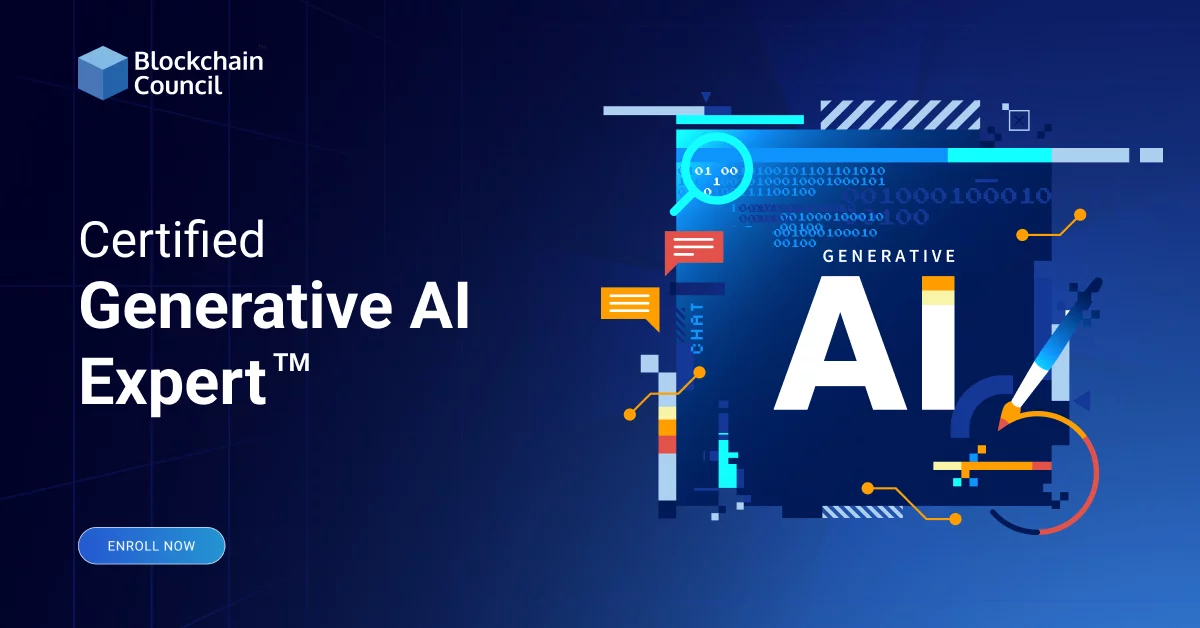

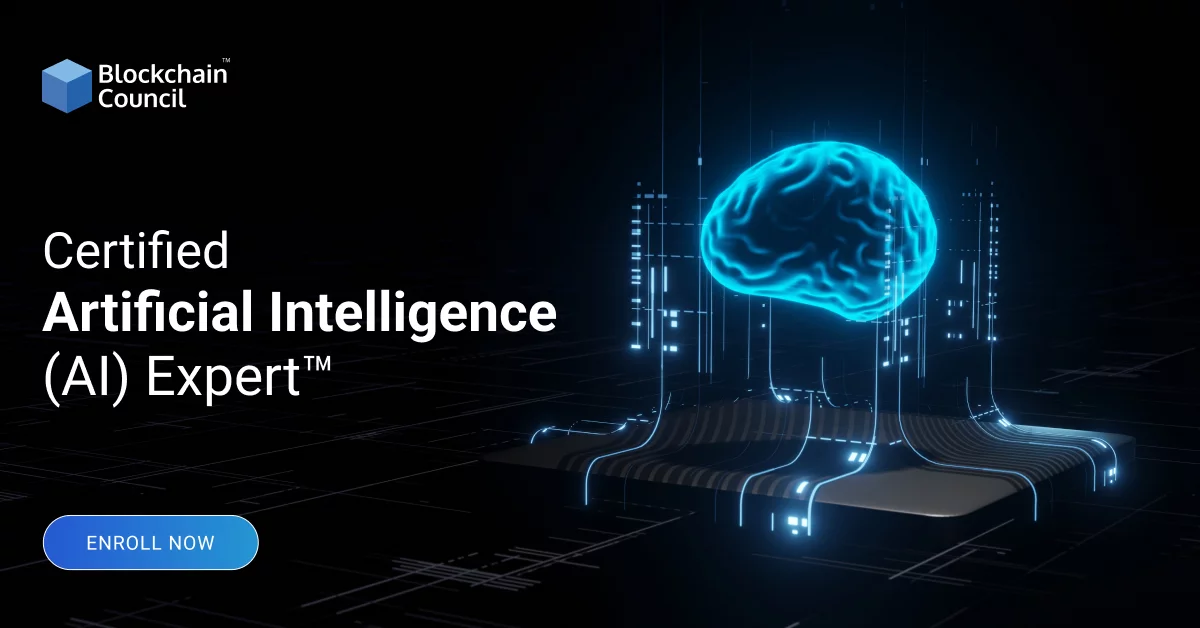






































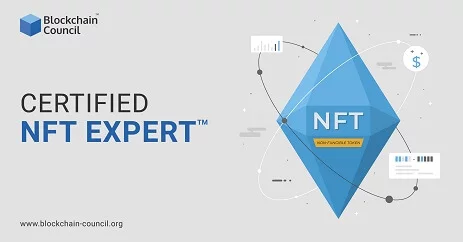

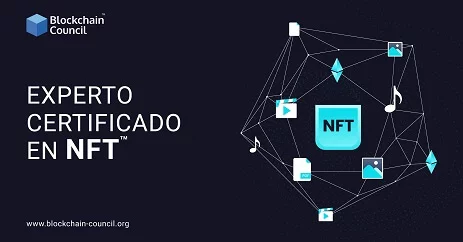











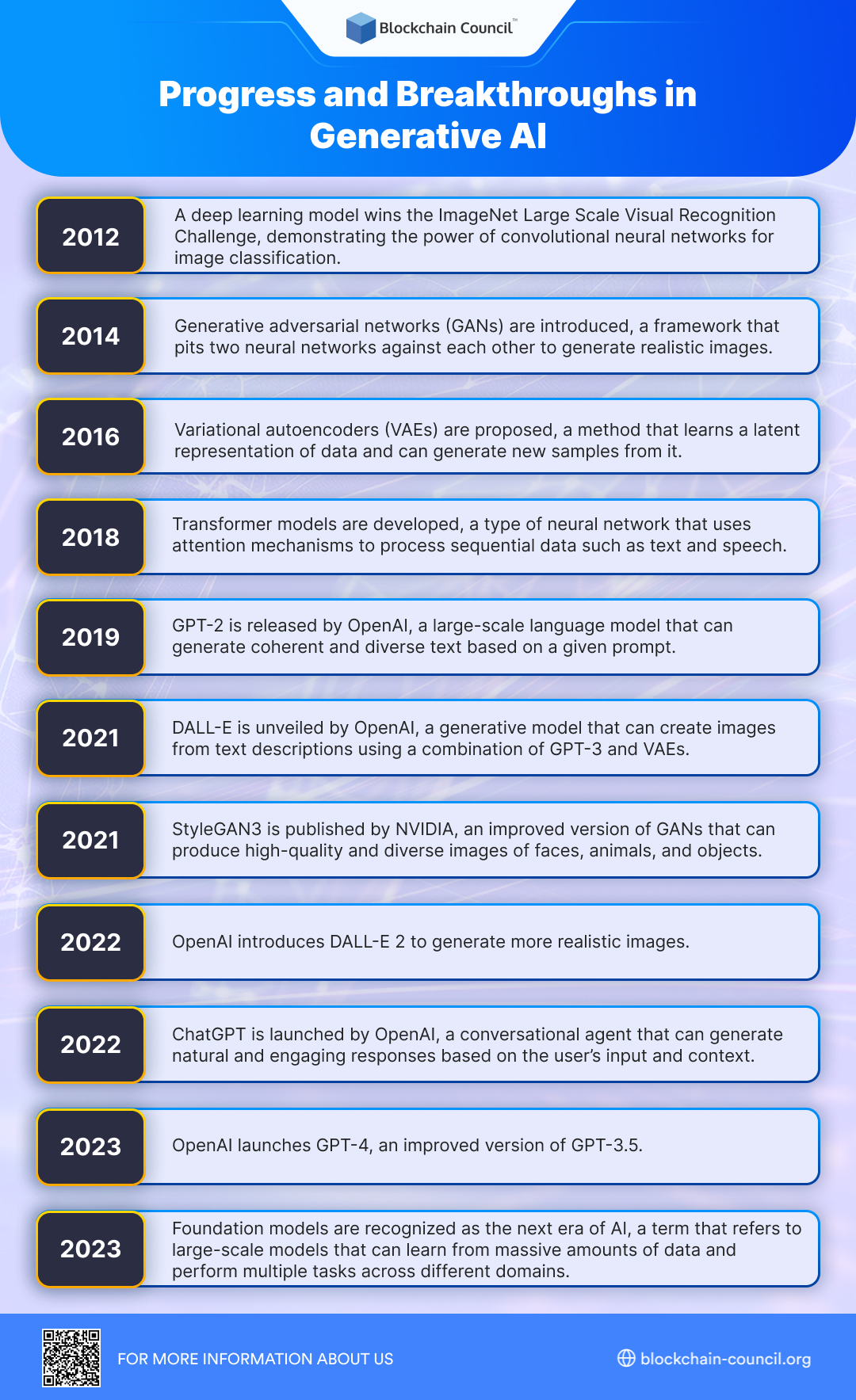

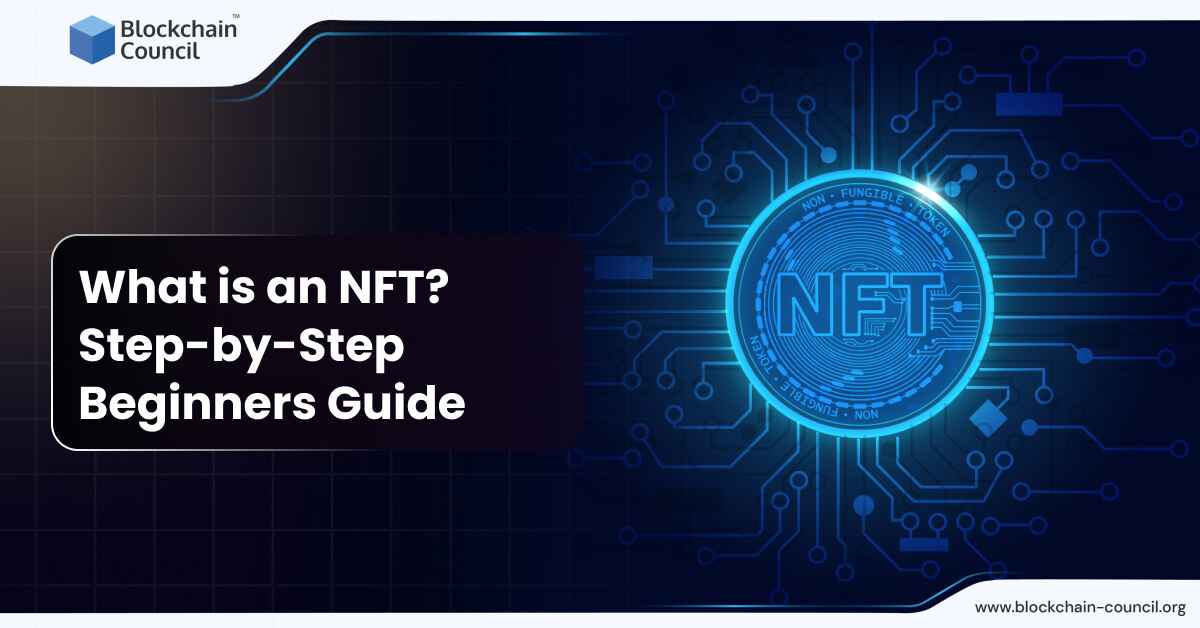
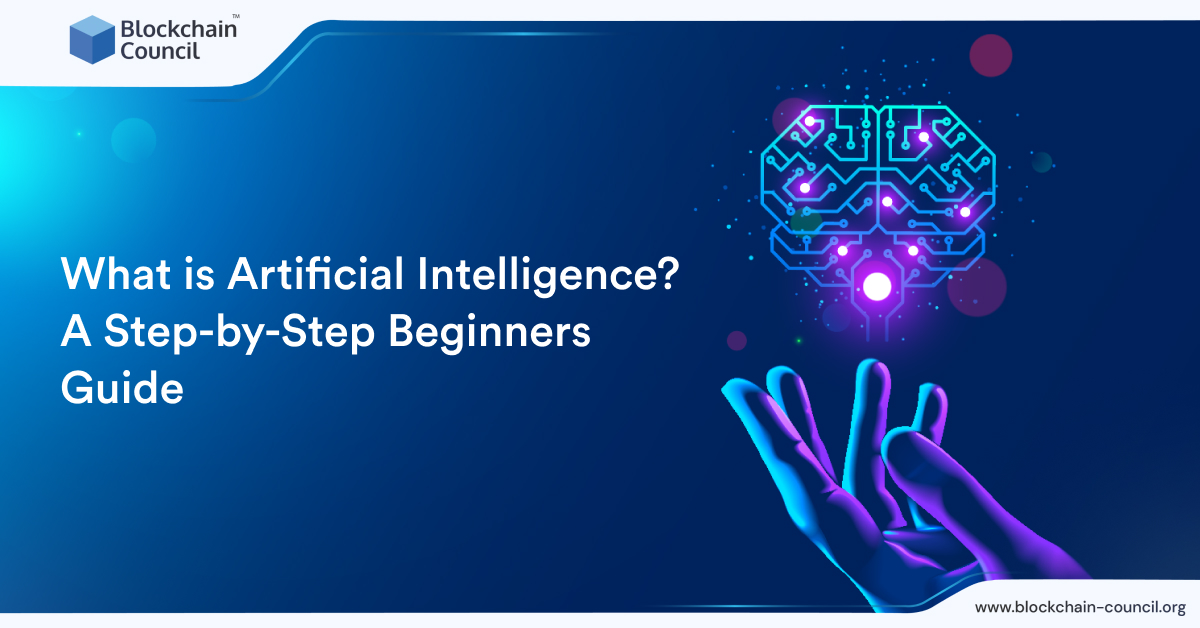

 Guides
Guides News
News Blockchain
Blockchain Cryptocurrency
& Digital Assets
Cryptocurrency
& Digital Assets Web3
Web3 Metaverse & NFTs
Metaverse & NFTs
